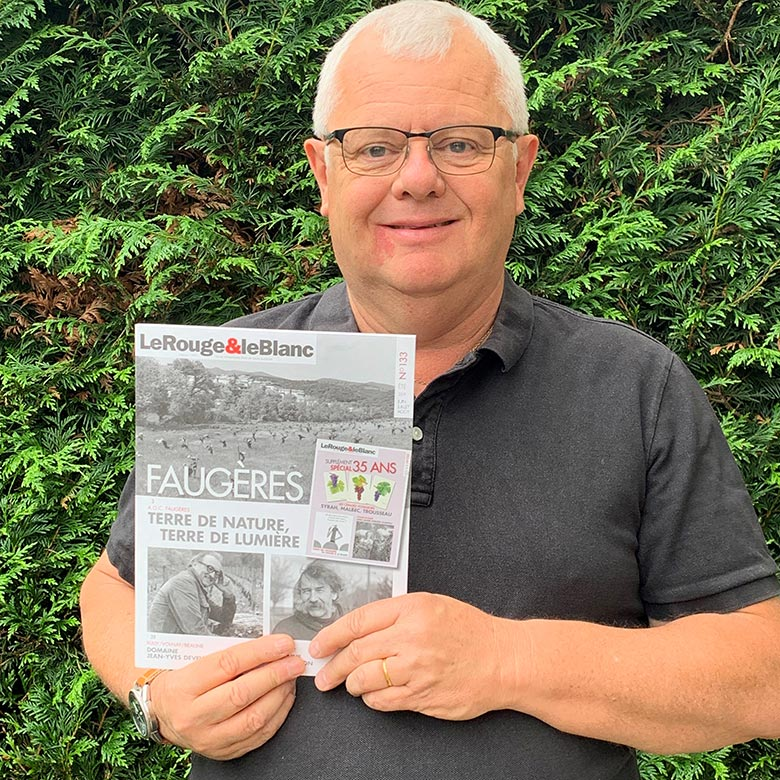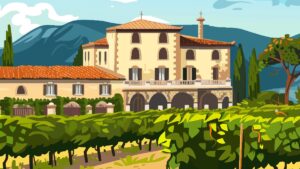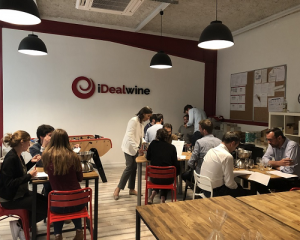
You know how much we love the magazine for wine enthusiasts par excellence, Le Rouge & le Blanc. As the magazine celebrates its 35th birthday, we interviewed Philippe Barret, the current editor-in-chief (and incidentally, a former colleague). Together, we look back at the publication’s history and philosophy.
Philippe, could you tell us more about how the magazine was created and how it’s evolved since.
The first issue came out in the autumn of 1983. It was born from wine lovers joining forces, having come to the conclusion that they could never find the information that interested them about wine. Bruno Genty and Jean-Benoît Chabrol founded the magazine. From the outset, the publication’s focus was on terroir-driven, ‘clean’ wines, that were transformed as little as possible, in contrast to industrial wines. At the time, these wines weren’t spoken about in the traditional press.
In the beginning, the publication was closer to a fanzine to a magazine as it was produced with very minimal resources. Even so, … At the time, the team included people such as Michel Bettane, who wrote for us for several years and remains to this day a shareholder. The publication continued for 20 years with very little means and around 500-600 subscribers. As resources were limited, the contributing writers had to invest a lot of their time and energy to keep things going.
Then in the mid-2000s, new team members arrived, which gave a fresh of breath air. I arrived in 1999 along with many others, each of whom brought new ideas of how Le Rouge & le Blanc could evolve. The magazine was completely redesigned in 2004, with a fresh layout designed by the renowned Maurice Coriat, who had previously worked for big publications. We increased pagination and began writing more in-depth reports. It was a virtuous circle, and within two years, we had grown to 2,500 subscribers. Nowadays, we have a team of 12 collaborating writers – who write at least one article per year – and we can really take the time necessary for our reporting assignments.
What is the guiding philosophy behind Le Rouge & le Blanc? How does it differ from other wine publications?
Right from the outset, our philosophy was centered around three principles, and it hasn’t changed since: all our writers contribute on a volunteering basis; the publication is completely independent (no ads) and the work is the product of a collective effort. This last point is very important and is possibly what differentiates us most from others: everything is decided collectively; we taste together, and each wine’s score and description is a synthesis of several personal opinions. We don’t showcase one single person’s opinion and don’t try to pass as ‘gurus’ giving our scores. In the same vein, our editorial line hasn’t changed: we are still interested in terroir-driven, authentic and clean wines, marginal wines so to speak, produced by young, promising new producers just getting into winemaking and those with a new idea/vision. We like discovering new domains. We also find it paramount to fight against all that standardizes wines.
The publication is celebrating its 35 years, bringing in important changes. Could you tell us more?
We’ve just brought out a special issue for our 35th birthday, with a small supplement (72 pages rather than 48), with as a special feature, the story of how the publication came into existence illustrated by cartoons from Michel Tolmer. We’ve entirely revamped the Le Rouge & le Blanc website (it came out in late June), so that it’s now coherent with the print design and contains more free content. Everything has been made digital: subscriptions, buying back copies or themed collections of articles (for instance technical articles). The biggest news – and that which is most of interest to you, dear English-speaking readers – is that we’ve now launched an English version of the publication (accessible online). Given our specialist positioning, our target readership is of course fairly limited, but we have a lot of potential for development with anglophone readers, given our contacts in these countries: sommeliers, importers, etc.
So, how do we join the adventure?
Before, we would only recruit by co-optation, now, we also accept spontaneous applications. But the process is very long. Often a year passes between the first tasting and the first article, to give new writers the time to immerse themselves in the team’s and publication’s spirit.
See the wines for sale on iDealwine



